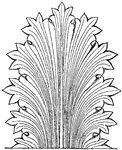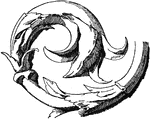Profile of the Caryatis with Pedestal and Entablature
Caryatides are a blending of architecture and sculpture, but they are not of frequent occurrence. These…

Doric Column from the Temple of Neptune at Paestum
The Doric columns, which are short, powerful, and closely ranged together, in order to support the weight…

Doric Order Frieze in the Parthenon at Athens
The frieze of the Doric order is not taken up with sculpture in uninterrupted succession, but it occurs…
Ionic Pillar in the Erechtheum at Athens
The Ionic order was indebted for its earlier development to western Asiatic influence, notably to that…
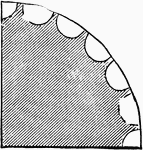
Fluting Plan of the Ionic and Corinthian Column
The Ionic column has a less diminished shaft and a smaller parabolic curve than the Doric. It is, like…
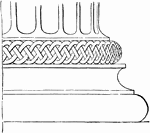
Attic Base in the Temple of Minerva Polias
The so-called Attic base is the form which most frequently occurs; and consists of two tori separated…
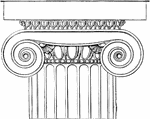
Ionic Capital from the Temple of Minerva Polias at Priene
In the capital the Doric echinus is replaced either by a cyma ornamented with leaves, or, more generally,…

Side View of the Ionic Capital from the Temple of Minerva Polias at Priene
These volutes, or scrolls, when viewed from the side, appear to meet in the middle, and form a wavy…

Section of a Volute of an Ionic Capital
These volutes, or scrolls, when viewed from the side, appear to meet in the middle, and form a wavy…
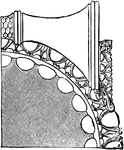
Top View of the Ionic Capital from the Temple of Minerva Polias at Priene
These volutes, or scrolls, when viewed from the side, appear to meet in the middle, and form a wavy…
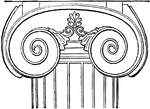
Ionic Capital from the Temple of Apollo at Basse
In the capital the Doric echinus is replaced either by a cyma ornamented with leaves, or, more generally,…
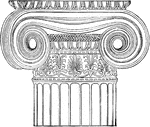
Ionic Angle Column from the Temple of Minerva Polias at Athens, Front
The good effect of the Ionic capital is really only produced by the front-view. It seems calculated…

Ionic Angle Column from the Temple of Minerva Polias at Athens, Side
The good effect of the Ionic capital is really only produced by the front-view. It seems calculated…
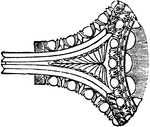
Plan of Ionic Antæ Capital from the Temple of Minerva Polias at Athens
The capital of the antæ and pilasters is without volutes, as is seen here. The shaft has no flutings;…
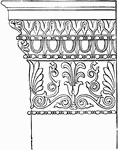
Ionic Antæ Capital from the Temple of Minerva Polias at Athens
The capital of the antæ and pilasters is without volutes, as is seen here. The shaft has no flutings;…
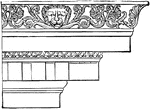
Ionic Cornice from the Temple of Minerva Polias at Priene
The entablature resting on the columns has three parts: a plain architrave divided into two, or more…
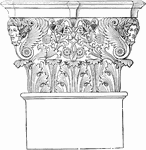
Corinthian Capital
The structural tendency which prevails in the capitals of all orders to change from the circular form…
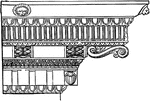
Corinthian Cornice
The Corinthian cornice is only distinguished from the Ionic by its mutules and modillions, which take…

Acanthus Leaf, Front and Side Views
The acanthus is one of the most common ornaments used to depict foliage.

Mutule, Side View
Rectangular block under the soffit of the cornice of the Greek Doric temple, which is studded with guttae.…

Mutule, Front View
Rectangular block under the soffit of the cornice of the Greek Doric temple, which is studded with guttae.…
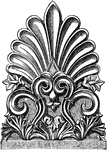
Ante-fixae
Ante-fixae, the vertical blocks which terminate the covering tiles of the roof of a Roman, Etruscan,…
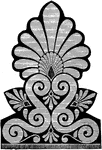
Ante-fixae
Ante-fixae (from Latin antefigere, to fasten before), the vertical blocks which terminate the covering…

Egg-and-Dart
Egg-and-dart is an ornamental device often carved in wood, stone, or plaster quarter-round ovolo mouldings,…

Double Twist on an Astragal
An astragal is molding profile composed of a half round surface surrounded by two flat planes (fillets).…
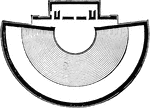
Ground Plan of the Theatre at Iassus
The theatres were originally built on a very large scale to accommodate the large number of people on…
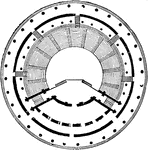
Ground Plan of the Theatre of Herodes Atticus
The Odeon of Herodes Atticus is a stone theatre structure located on the south slope of the Acropolis…

Choragic Monument of Lysicrates
Of a less ambitious class were those monuments erected in honor of the victorious choragus in musical…
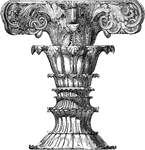
Finial of the Choragic Monument of Lysicrates
Of a less ambitious class were those monuments erected in honor of the victorious choragus in musical…

Erechtheum with the Pandrosium
Belonging to the time directly after Pericles is the Erechtheum. This is a double temple in the Ionic…

Greek Griffin
The Greek Griffin is associated with Antiquity and fire, usually appears on Candelabras and friezes.…

Bacchus Mask
The Bacchus Mask (Greek God of wine) is a Graeco Italic style. It is a fragment of a vessel or utensil.
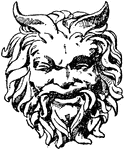
Satyr Mask
The Satyr Mask (Greek Mythological character) was designed during the Italian Renaissance by Sansovino,…
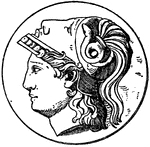
Minerva Head
The Minerva head is a design on the Greek Goddess Athena. This design frequently occurred on medallions.
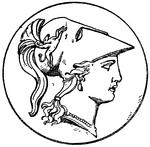
Right Minerva Head
This Right Minerva head is the modern version design of the Greek Goddess Athena. This design frequently…
Double Pattern Fret Band
The double pattern fret band is a Greek design. It is the same pattern that is doubled in the band.

Ordinary Intersecting Fret Band
The ordinary intersecting fret band is a pattern that crosses each other, found on Greek vase paintings.

Ordinary Intersecting Fret Band
The ordinary intersecting fret band is a pattern that crosses each other, found on Greek vase paintings.

Ordinary Intersecting Fret Band
The ordinary intersecting fret band is a pattern that crosses each other, found on Greek vase paintings.

Ordinary Intersecting Fret Band
The ordinary intersecting fret band is a pattern that crosses each other, found on Greek vase paintings.
Ordinary Intersecting Fret Band
The ordinary intersecting fret band is a pattern that crosses each other, found on Greek vase paintings.

Ordinary Intersecting Fret Band
The ordinary intersecting fret band is a pattern that crosses each other, found on Greek vase paintings.

Greek Hydria Rosette Band
The Greek hydria rosette band is a design of the neck of a Greek hydria flower.

Leaf Enrichment Moulding
The leaf enrichment moulding is a design found in Erechtheum, Athens an ancient Greek Temple.

External Margin Link Border
The external margin link border is found on the outside of a Greek kylix or wine-drinking cup. It is…

Greek Hydria Link Border
The Greek hydria link border is a design found on the outside of a Greek pottery used for carrying water.…

Greek Cyma Link Border
The Greek Cyma Link Border is a design found between the ceiling and the wall. It is a scroll design…
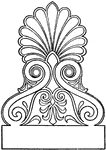
Greek Akroter
The Greek akroter serves as an ornamental finish to the apex of a gable. It is painted in the temple…

Greek Akroter
This Greek akroter is painted in Acropolis, Athens. It serves as the ornamental finish to the apex of…
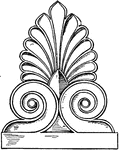
Greek Antefix
The Greek antefix is found in the lower roof line, in front of the imbrices (overlapping roof tiles).…
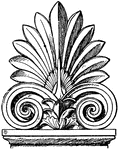
Greek Sepulchral Stele-Crest
The Greek Sepulchral stele-crest is a form of an akroter. This design is an ornamental finish to the…
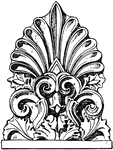
Greek Antefix
This Greek antefix is found in the propylaea which is the entrance to the Acropolis of Athens. This…

Stele-Crest
The Stele-crest is a Greek tomb-tone. It is an upright tablet that bears an inscription with decoration…

